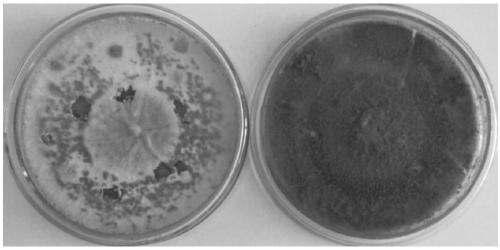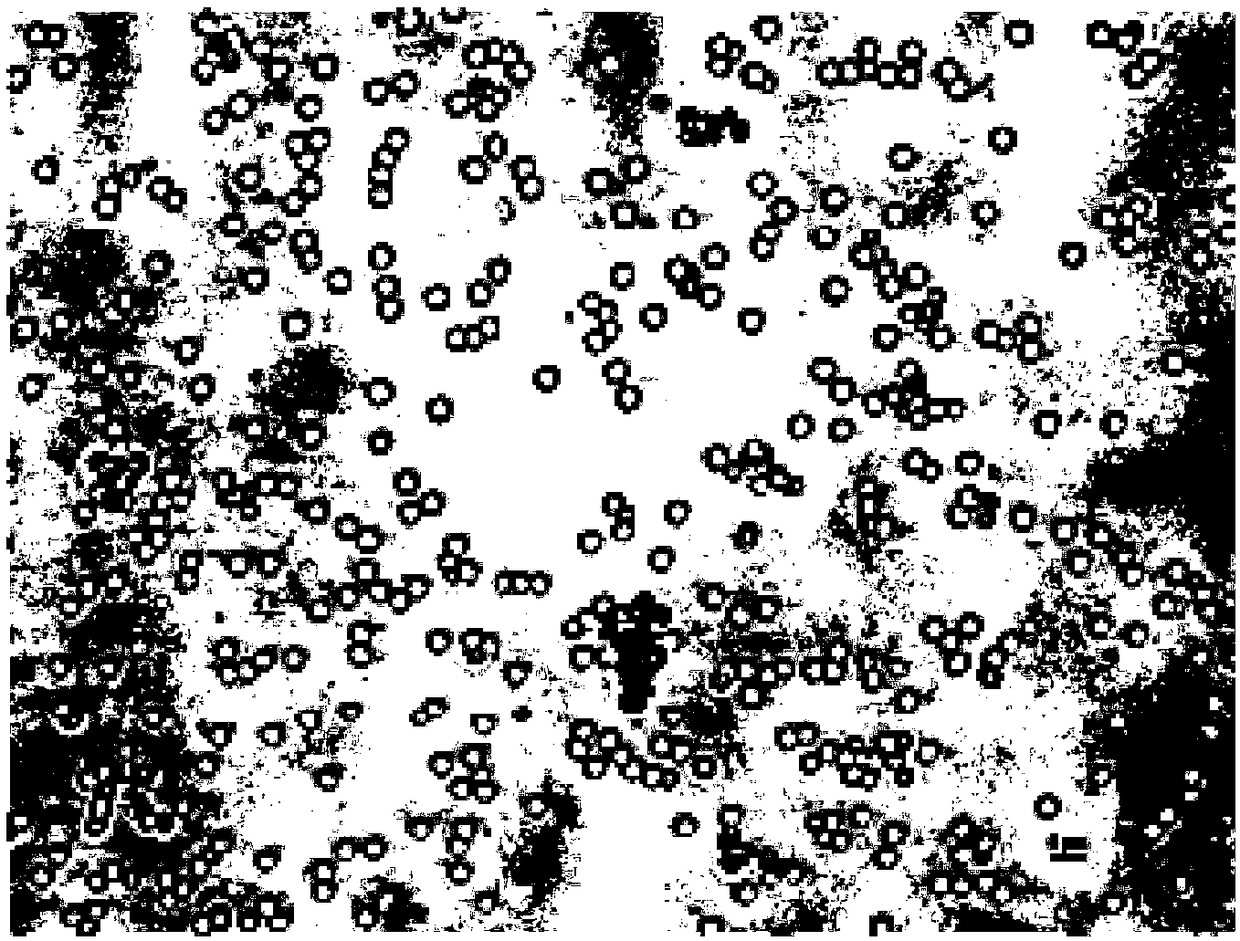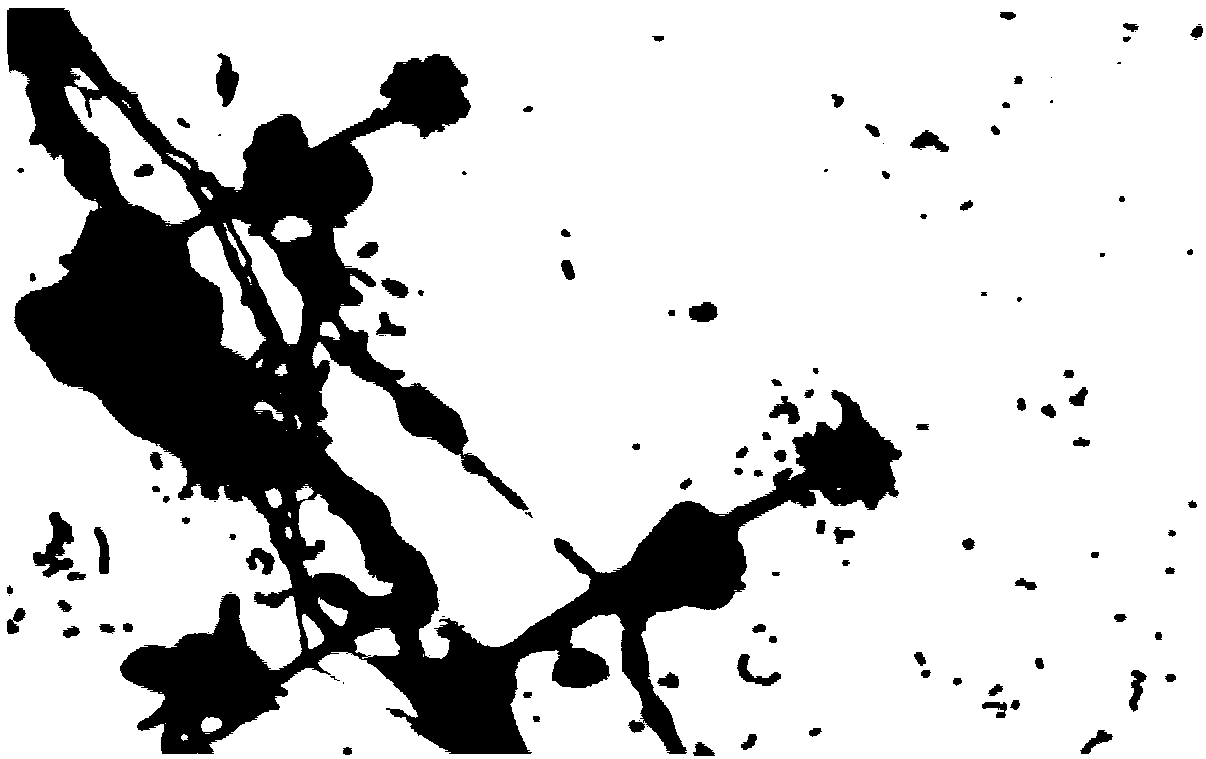Salt-resistant and alkali-resistant soil aspergillus strain as well as ITS sequence and application thereof
A technology of Aspergillus terreus and alkali resistance, applied in application, fungi, and microbial-based methods, etc., can solve problems such as difficult development, activity inhibition, and limited microbial species, and achieve the effect of broad application prospects
- Summary
- Abstract
- Description
- Claims
- Application Information
AI Technical Summary
Problems solved by technology
Method used
Image
Examples
Embodiment 1
[0027] Isolation of Aspergillus flocculus JYJ-5 Strain
[0028] Isolation of the strains: The soil samples for the isolation of the strains were from Changchun City, Jilin Province. The five-point sampling method was used to collect samples at the collection site, and the soil within 30 cm deep of the soil plow layer was taken, put into sterilized glass bottles and brought back to the laboratory for later use. Using the dilution coating method, the diluted and clarified soil supernatant was spread on the potato dextrose agar medium (PDA) supplemented with NaCl to 150.0g / L, cultivated for 4 days under the condition of pH=10, and passed through 3 rounds of screening A fungal strain resistant to salt and alkali, Aspergillus terreus JYJ-5, was isolated. This strain was deposited in the General Microorganism Center of China Committee for the Collection of Microbial Cultures on March 19, 2018, with the preservation number CGMCC 15368.
Embodiment 2
[0030] Identification of Aspergillus flocculus JYJ-5 Strain
[0031] 1. Morphological identification of the bacterial strain: the Aspergillus terreus JYJ-5 screened in Example 1 was inoculated onto Chase agar medium, cultured at 30° C. for one week, the colony morphology was observed and its sporulation structure and hyphae morphology were examined under a microscope. After being cultured on a Chase agar plate at a temperature of 30°C for 1 week, the colony is round or nearly round with a raised center, such as figure 1 shown. Use a pick needle to take the mycelia on the surface layer of the colony, make a glass slide, and carry out microscopic observation: the mycelia and spore peduncles are smooth, the conidiophores grow upright, the tops of the stalks are enlarged and spherical, and conidia germinate on the top of the small stalks, as shown in Fig. image 3 and Figure 4 shown. The conidia are spherical unit cells, such as figure 2 shown. Morphologically identified as...
Embodiment 3
[0035] Identification of Salt and Alkali Resistance and Optimum Salt Concentration of Aspergillus terreus JYJ-5
[0036] 1. the mensuration of Aspergillus terreus JYJ-5 optimum salt concentration: the PDA medium of preparation gradient NaCl content, the pH of described medium is 7.0, and its salt concentration increases to 31wt% (saturated concentration) by 1wt%, every Level increased by 2%, with no NaCl added PDA as the control group. An equal amount of strains were inoculated in the center of the culture medium and cultured at 30°C for 1 week. It was found that the strains could grow in 0%-31% NaClPDA medium at a temperature of 30°C, but the growth of the strains was significantly inhibited as the salt concentration increased. The growth is relatively slow at the concentration of 1%-5%; the growth of the strain is accelerated at the concentration of 5%-15%, the growth of the strain is sharply slowed at the concentration of 17%-25%, and the bacteria basically do not grow at ...
PUM
 Login to View More
Login to View More Abstract
Description
Claims
Application Information
 Login to View More
Login to View More - R&D
- Intellectual Property
- Life Sciences
- Materials
- Tech Scout
- Unparalleled Data Quality
- Higher Quality Content
- 60% Fewer Hallucinations
Browse by: Latest US Patents, China's latest patents, Technical Efficacy Thesaurus, Application Domain, Technology Topic, Popular Technical Reports.
© 2025 PatSnap. All rights reserved.Legal|Privacy policy|Modern Slavery Act Transparency Statement|Sitemap|About US| Contact US: help@patsnap.com



